$2.6 Million spent to deconstruct buildings after long, closed meeting
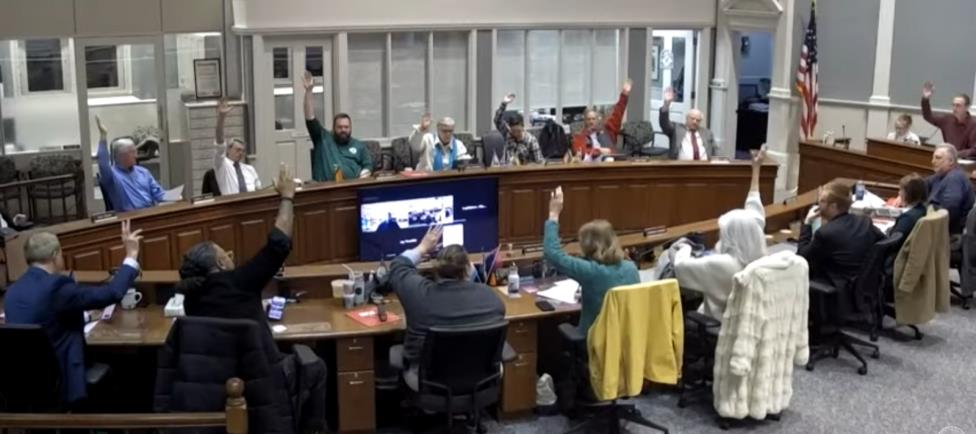
“I feel like this is a runaway train at this point.”
Tompkins County Legislator Shawna Black, on the Center of Government, Nov. 4.
by Robert Lynch; November 7, 2025; Updated November 11, 2025
An Update to this Story:
On Monday, November 10, Tompkins County Legislator Randy Brown, Chair of the Legislature’s Downtown Facilities Special Committee, released the following statement in response to this writer’s inquiry asking him to explain his position on deconstruction of existing buildings on the Downtown Center of Government site and the lengthy executive session held by the Legislature November 6 as well as a similar executive session held two days earlier by the committee Brown chairs.
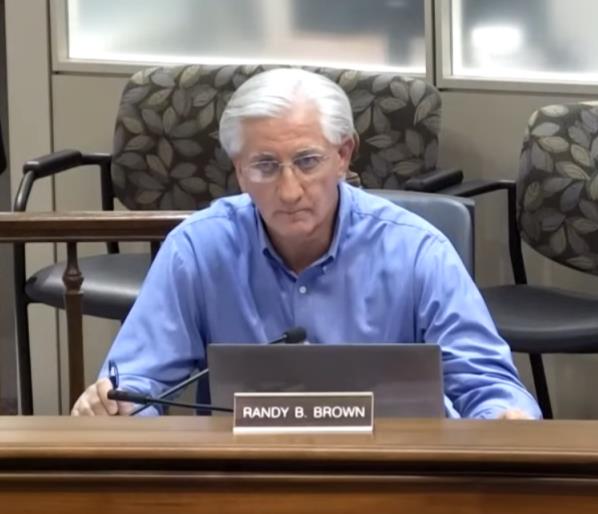
Likely bound by secrecy, Brown did not discuss publicly the Legislature’s executive session. But he did indicate the legality of the committee’s closed discussions were approved in advance by the County Attorney and were held to receive Holt Architects’ assessment of the project’s cost.
As for the Center of Government project itself, Legislator Randy Brown stated:
“The County has taken many steps over the years to construct a building downtown that would house up to fifteen departments. This building would be over 50,000 square feet, and the project would include renovations to two buildings owned by the County located on Court Street.
“Earlier this year the County approved $50,000,000 for the entire project and we are now hearing the cost will exceed this number. I am not in favor of spending this amount of money when other less expensive options are available. One option should be a smaller building based on actual need.
“I also believe the County has building spaces that are underutilized that would provide better access to constituents.
“I will be working with County Administration to consider other options seriously and completely. The County has many future costs we must consider before spending taxpayer funds on this project and the impact to the tax levy must be recognized.”
Randy Brown joined all other legislators November 6 in authorizing funding for deconstruction of existing buildings on the Center of Government site. / RL
****
Now, the original story:
Transparency involving the Tompkins County Center of Government took another hit Thursday night. And it did so as County legislators admitted that tearing down three of the buildings on the center’s site will cost almost as much as did buying two of them.
In a unanimous vote preceded by zero public debate November 6, the Tompkins County Legislature authorized the County’s Facilities Department to spend up to $2.6 Million to “deconstruct” three buildings standing in the project’s path. To come down are the former Key Bank branch at East Buffalo and North Tioga Streets; the vacated multi-attorney “Professional Building,” located next to it on North Tioga; and “Building C,” the Board of Elections and Assessment office, situated on the former bank’s Buffalo Street side.
But the Legislature’s late-night action came only after a closed executive session that stretched on for more than an hour and a half.
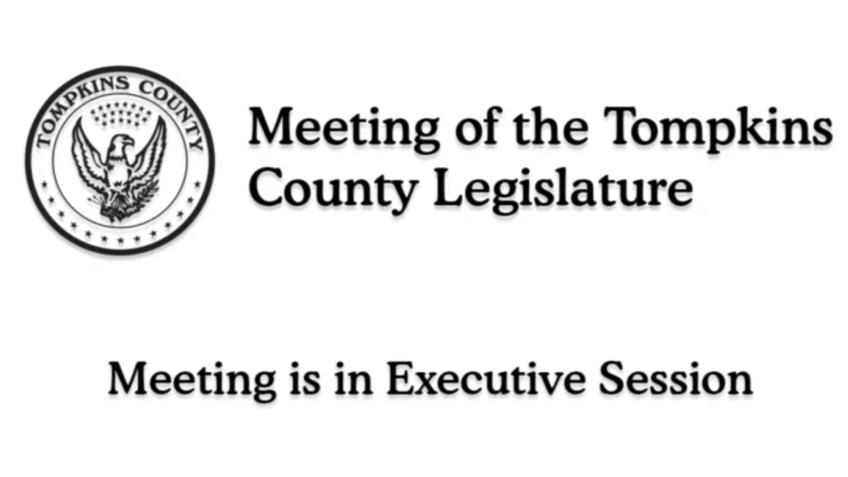
All three downtown structures would need to come down to clear the land for the planned four-story Center of Government, an increasingly expensive, consolidated office complex that would rise up adjacent to the Courthouse. Most recent figures have priced the project at $50 Million. But based on new estimates, that cost is now expected to jump by multiples of millions.
After a prior series of many closed-door meetings earlier this decade, Tompkins County bought the Key Bank and the Professional Building in the fall of 2021 for a combined nearly $3 Million. Building C has been owned by Tompkins County for more than a half-century. It was once the TV studio for Ithaca College.
Earlier Thursday, in a written report to local municipal officials, one read during a monthly conference call, County Administration, through its Communications Director, claimed that at a legislative committee meeting two days earlier, and as part of a report by architects, “it was reported that the overall project cost is currently estimated to be approximately $14 million higher than the original projection.”
The problem is, architects never made such a statement, at least not during the committee’s public portion. The only overall project pricing talk occurred as an aside comment by one legislator to another, a comment suggesting that total cost had risen to $60 Million.
What is the current estimate, legislator Shawna Black asked her colleague Deborah Dawson, sitting beside her that day.
It was “30 to 40,” and now we’re at 60,” Dawson answered.
Actually Deborah Dawson had started low. When former County Administrator Jason Molino in 2019 had revived the Center of Government concept, albeit on a different site, he’d pegged the project at $20 Million or less.
Ever since taking office in January, the current County Administrator, Korsah Akumfi, has pressed forward toward approving the newly-costlier project. His efforts led to a quasi-binding commitment to proceed, approved by legislators in June. By necessity, all plans include old building deconstruction.
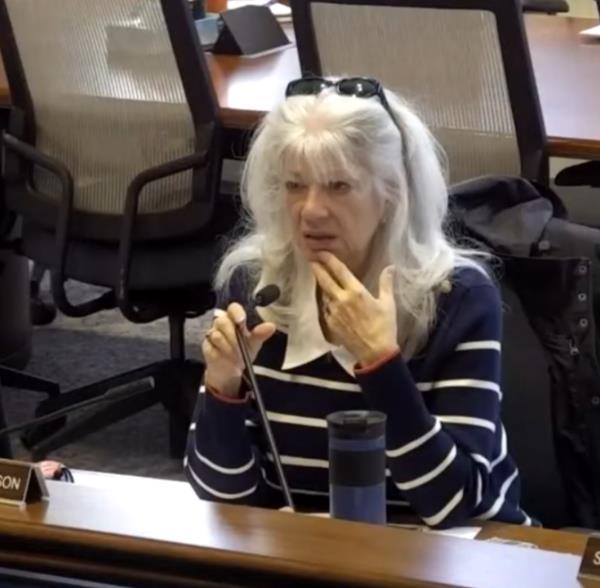
Akumfi attended Thursday’s meeting only remotely, and he spoke little about the project at that time. But the narratve County Administration presented municipal leaders in writing earlier that day was likely of Akumfi’s crafting.
Of the $14 Million estimated cost escalation, Administration wrote municipal leaders, “The County is reviewing these updated cost estimates to determine potential adjustments to the project scope, timeline, or financing strategy.”
“As of now, the County’s Center of Government initiative continues to advance unless there is a resolution from the Legislature to change direction in any way,” the Administration’s narrative, read by the communications staffer, continued. “While the updated cost estimate presents obviously new fiscal considerations, County Administration and Facilities continue to move forward to ensure a successful implementation of this project,” the message stated.
When the deconstruction resolution reached the Legislature floor Thursday night, members made it clear they’d prefer evaluating the Center of Government’s future in private.
Even the text of Thursday’s adopted resolution was kept secret from online attendees prior to and during the meeting. The resolution was hidden in the so-called “red folders” that only legislators and staff can access in advance. No committee had publicly vetted the measure. The resolution’s text was not recited on the floor. And before its adoption, sponsor Randy Brown referred to the resolution only by its title, “Approval of Funding for Deconstruction of Buildings.”
After the measure was moved and seconded following the executive session’s end, Legislature Chair Dan Klein asked for discussion. No one spoke. And after a momentary pause, Klein called for a vote. All hands shot up in support. Business concluded, the Legislature promptly adjourned.
The resolution’s contents were only made known after a legislative clerk had handed this writer, at his request, a copy of the draft document through the legislative chambers’ door late Friday morning.
After being contacted Friday afternoon and asked why the need to deliberate the resolution in private, legislator Brown had not responded prior to the posting of this story.
The latest wrinkle elevating the Center of Government’s deconstruction cost is a familiar one in these sorts of projects, asbestos removal. And the problem child among the three structures doomed for destruction is Building C, the Elections and Assessment office.
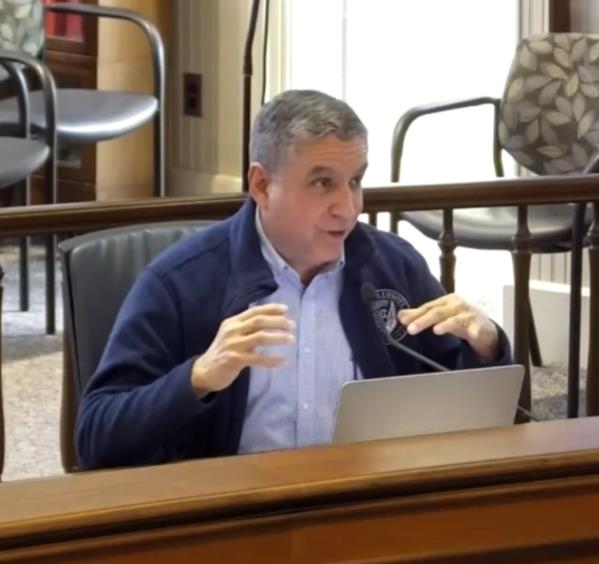
“The exterior has friable asbestos in the stucco,” Arel LeMaro, Tompkins County Facilities Director, advised the Downtown Facilities Special Committee November 4, the committee chaired by Newfield-Enfield’s Brown, the lawmaker who brought the deconstruction measure to the full Legislature Thursday.
The stucco’s been crumbling off Building C for years. But until a recent engineering review, nobody knew it contained asbestos. Because of that newfound danger, scaffolds must be erected, plastic tents put in place, monitors installed, and special removal procedures employed.
Largely because of Building C’s precautions, LeMaro and lead architect Quay Thompson estimated Tuesday that “abatement” expenses would contribute $1.3 Million toward the projected $2.5 Million cost to deconstruct all three buildings.
And no, LeMaro said, Tompkins County cannot stretch the rules as a private developer did earlier this decade when it tore down another asbestos-laden building, the Old County Library. It did so while still keeping “asbestos in place.”
The Old Library was supposedly different, LeMaro explained. The housing developer that bought the building secured a variance, perhaps on questionable grounds, maintaining that the library’s roof was falling in and that the building should be condemned. “These buildings are not condemnable,” Facilities Director LeMaro pointed out with the Buffalo and Tioga Street trio. Grounds for condemnation just don’t exist, he said.
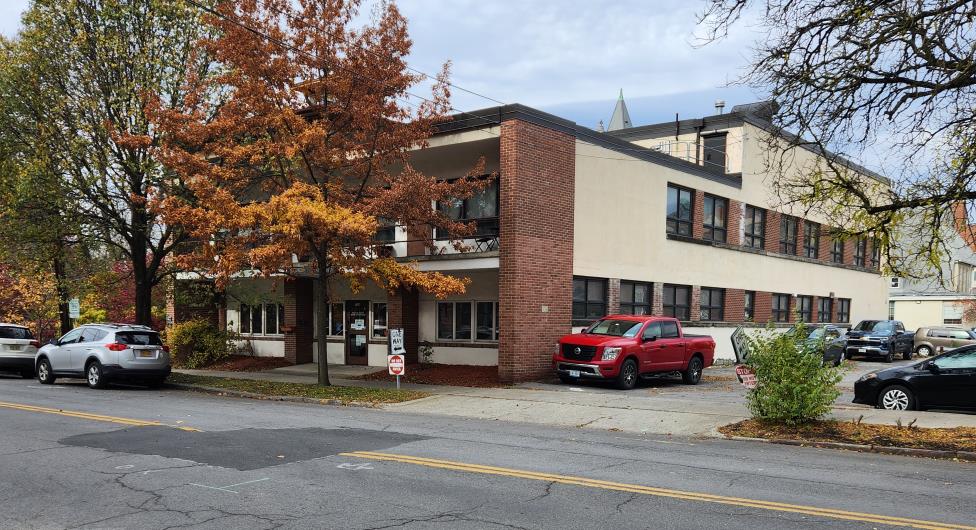
But not only is deconstruction costly, it takes time. Thompson estimated that taking pains to salvage usable materials along with all the abatements could consume a full eight months.
But if the asbestos abatement costs can’t be avoided, could other expenses be shaved? Might Tompkins County save money by not salvaging anything; by simply carting all debris to the landfill?
“I can’t help but wonder something that is so long and protracted a process, requires an on-site supervisor… and we’re not even sure there’s a market for a majority of the materials,” legislator Deborah Dawson asked Thompson and LeMaro, “why are we doing this?”
The rationale is community pressure. Preservationists welcome, well, preservation. And County leaders bowed to preservationists early-on. They did so in part to lessen community objections to taking the buildings down. And as much as Dawson might think differently, others are reluctant to budge.
“We just saw the East Wing of the White House demolished in a very few days. It shocked the country,” Dryden’s Mike Lane reminded the committee. “And so I think as we go forward, we’ve got to think about how people will react if we just go in and push it down.”
Dawson saw an opening. Midway through Lane’s admonition about East Wing razing, she interjected, “You think we could get those guys?”
At the Legislature, Randy Brown described the Election Day meeting of the Downtown Facilities Committee as “the longest meeting to date.” From the public’s perspective, that can’t be said. The Tuesday session’s public portion ran only 45 minutes.. Meetings of the committee have run longer. It suggests that the executive session of the committee Brown called that day was the long part, perhaps rivaling in its length the later discussion Brown had requested of the full Legislature.
“I think maybe the discussion in executive session provides some broader context,” Groton’s Lee Shurtleff said, albeit hesitantly, in inviting closed doors. “But you know, it’s not typically something to come out of executive session and take action or vote,” Shurtleff advised.
Customary or not, that’s what the Legislature did.
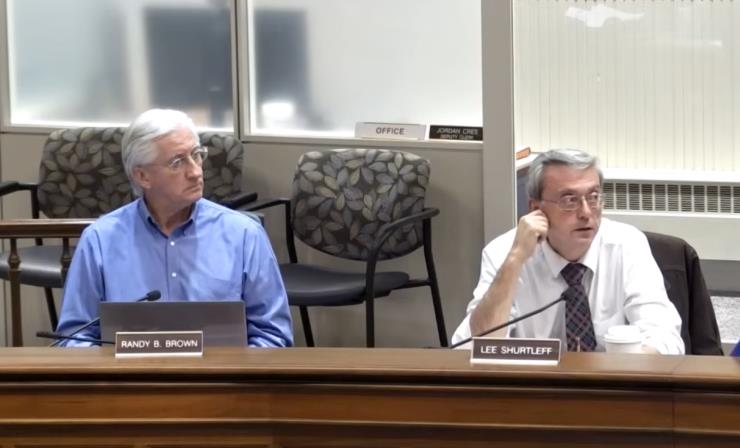
“I would prefer to do it right now,” Legislature Chair Dan Klein stated his preference for immediacy, Klein apparently seeing no need for a closed-door huddle prior to a vote on deconstruction funding. Mike Lane agreed with Klein.
Yet Randy Brown prevailed. And Klein bowed to Brown’s wishes. After finishing other business, the Legislature shuttered its doors—and its video stream—and employed the “real estate exception” to New York’s Open Meetings Law. The exception allows private consideration of the “proposed acquisition, sale or lease of real property,” when publicity would potentially affect the property’s value.
To lean upon that clause to address only the razing of buildings government already owns could stretch state law beyond its breaking point. But were the Legislature to also weigh abandonment of the Center of Government project altogether in favor of other options, such as purchase of available buildings in the Cornell Business Park or the more recent offer by owners of Harold’s Square to sell or lease vacant office space in the high rise they own on the Commons, the leap to justify comes easy.
We, the public, may never know, of course, what was discussed. Legislators sequestered themselves behind locked doors at about 9:20 Thursday night. They reconvened at about Eleven. They took their vote, and then they went home.
Yes, it would have been nice had on this important a matter—an eight-figure investment whose costs keeps climbing, and climbing fast—that a public body whose members we elect to do our bidding had conducted their public business in public.

But that’s not been how the Center of Government has tended to be handled. And that secrecy dates back to when former County Administrator Molino and legislative leaders kept their efforts to buy the Key Bank and law office buildings sheltered in silence for years. Those in the world of real estate likely knew what was going on. But we in the public couldn’t be told.
So, for now, we must rely on the cautionary words spoken in committee by legislator Shawna Black, a Center of Government supporter, but one who’s wary of public and colleague jitters.
“I’m afraid that the higher we get and the more expensive this project gets, the more likely we are to lose legislators that are behind the project,” Black told the Downtown Facilities Committee Tuesday. “And I think probably we could be at the tipping point of legislators that are ready to not support this project,” she warned.
And to colleague Dawson’s estimate of a 30 million dollar cost increase over this past half-decade, Black opined:
“So we’ve doubled the project in the past eight years that I’ve been on the Legislature. I understand the fact that if we don’t do it soon it’s going to keep doubling. But I feel like this is a runaway train at this point.”
Again, Black spoke at a committee meeting; not on the floor of the full Legislature on the night it voted to spend $2.6 Million of your money not really to build anything up, but instead to rip something down. Candor and transparency are nice, at least when you can find them.
###

